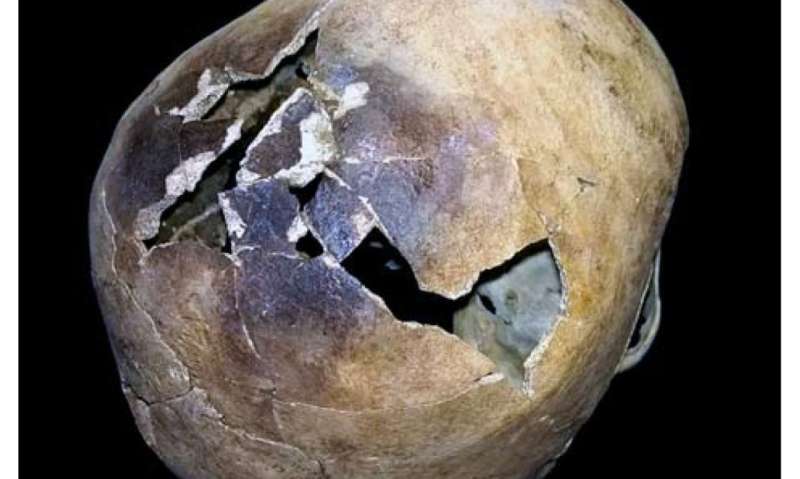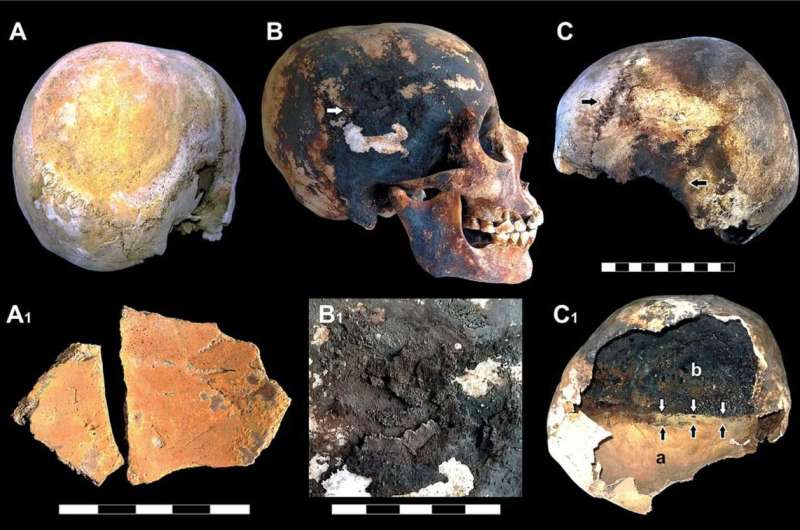October 10, 2018 report
Study shows people died from body fluid vaporization due to pyroclastic flows from Vesuvius

A team of researchers at the Federico II University Hospital in Italy has found evidence that suggests many people living in Herculaneum during the 79 AD eruption of Mt. Vesuvius were killed by the extreme heat characteristic of pyroclastic flows. In their paper published on the open access site PLOS ONE, the group describes telltale signs of heat damage they found in the remains of people living in the ancient Roman city at the time.
Most people learned in grade school that Mt. Vesuvius erupted back in 79 AD and covered cities such as Pompei in ash. So sudden was the disaster that many people were killed and buried in ash, leaving their "frozen" remains to be discovered by archaeologists approximately 1700 years later. Extensive research has shown that most of the victims in Pompei died from injuries or suffocation due to the thick ash. But this was not the fate of many people living in the nearby city of Herculaneum. The researchers with this new effort have found that many of them were killed by the extreme heat of pyroclastic flows.
Pyroclastic flows are flows composed of gas and volcanic material—prior research has shown that they can flow downhill away from an eruption at speeds of up to 450 mph—and temperatures are as hot as 1000 degrees C. When a person is overcome by such a flow, the result is instant death. The researchers found evidence in the remains of many people who had sought refuge in a boathouse near the sea in Herculaneum. The team began their investigation after learning of reports of evidence of people dying from thermal shock.
Upon taking a closer look at some of the remains, the researchers found red and black residue on parts of some of the bones. Prior research suggested that such residue typically occurs when bones are burned in the vicinity of coins or other metal objects—the residue typically consists of iron particles. Prior research has also shown that such residues can also be caused by blood being boiled away leaving behind suspended iron. Study of the residue showed that it was iron, though the researchers could not say for certain if it came from blood or metal objects. The researchers also found evidence of burst skulls, likely due to vaporizing brain matter.

More information: Pierpaolo Petrone et al. A hypothesis of sudden body fluid vaporization in the 79 AD victims of Vesuvius, PLOS ONE (2018). DOI: 10.1371/journal.pone.0203210
Journal information: PLoS ONE
© 2018 Phys.org




















